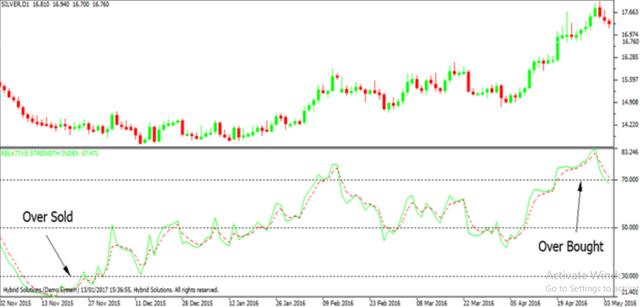The Relative Strength Index (RSI), developed by J. Welles Wilder, is a momentum oscillator that measures the speed and change of price movements. RSI oscillates between zero and 100. According to Wilder, RSI is considered overbought when above 70 and oversold when below 30. Signals can also be generated by looking for divergences, failure swings and centerline crossovers. RSI can also be used to identify general trend.

How RSI indicator works
• RSI is considered overbought when above 70 and oversold when below 30. • RSI also open forms chart pa erns that may not show on the price chart, such as double tops and bottoms and trend lines. Also, look for support or resistance on the RSI.
• In an uptrend RSI tends to remain between 40 to90 range with the 40-50 zone ac ng as support. During downtrend RSI tends to stay between the 10 to 60 range with the 50-60 zone ac ng as resistance.
• If security prices made new high or low that isn't confirmed by the RSI, this divergence can signal a price reversal. If the RSI makes a lower high and then follows with a downside move below a previous low, a Top Swing Failure has occurred. If the RSI makes a higher low and then follows with an upside move above a previous high, a Bo om Swing Failure has occurred.
Calculation
The RSI is a fairly simple formula, but is difficult to explain without pages of examples. Use the VertexFX trader to help you see a visual and use RSI. The basic formula is:
RSI = 100 – [100 / ( 1 + (Average of Upward Price Change / Average of Downward Price Change ) )
this is one the best strategy to use as forext trader
Downvoting a post can decrease pending rewards and make it less visible. Common reasons:
Submit